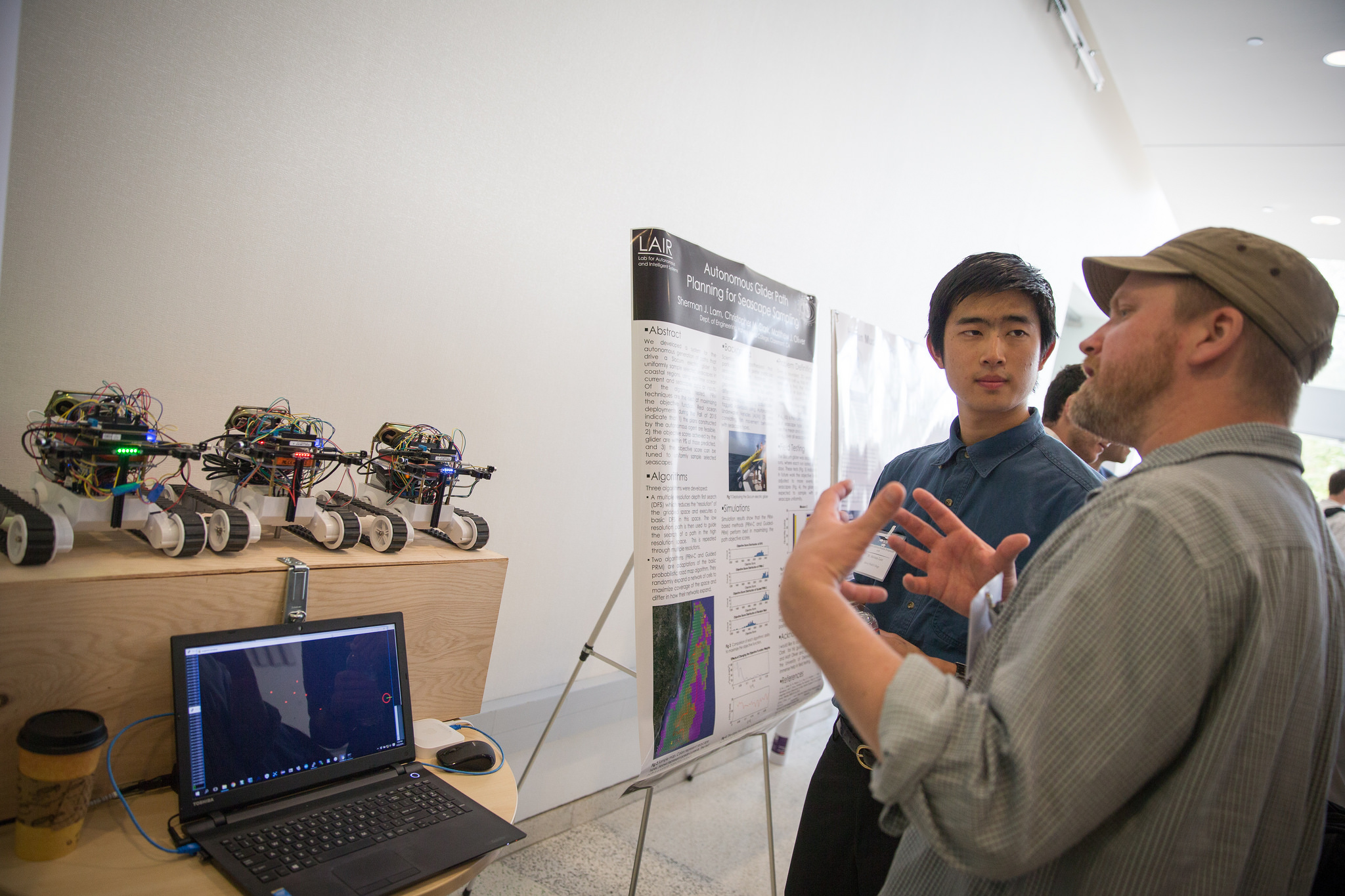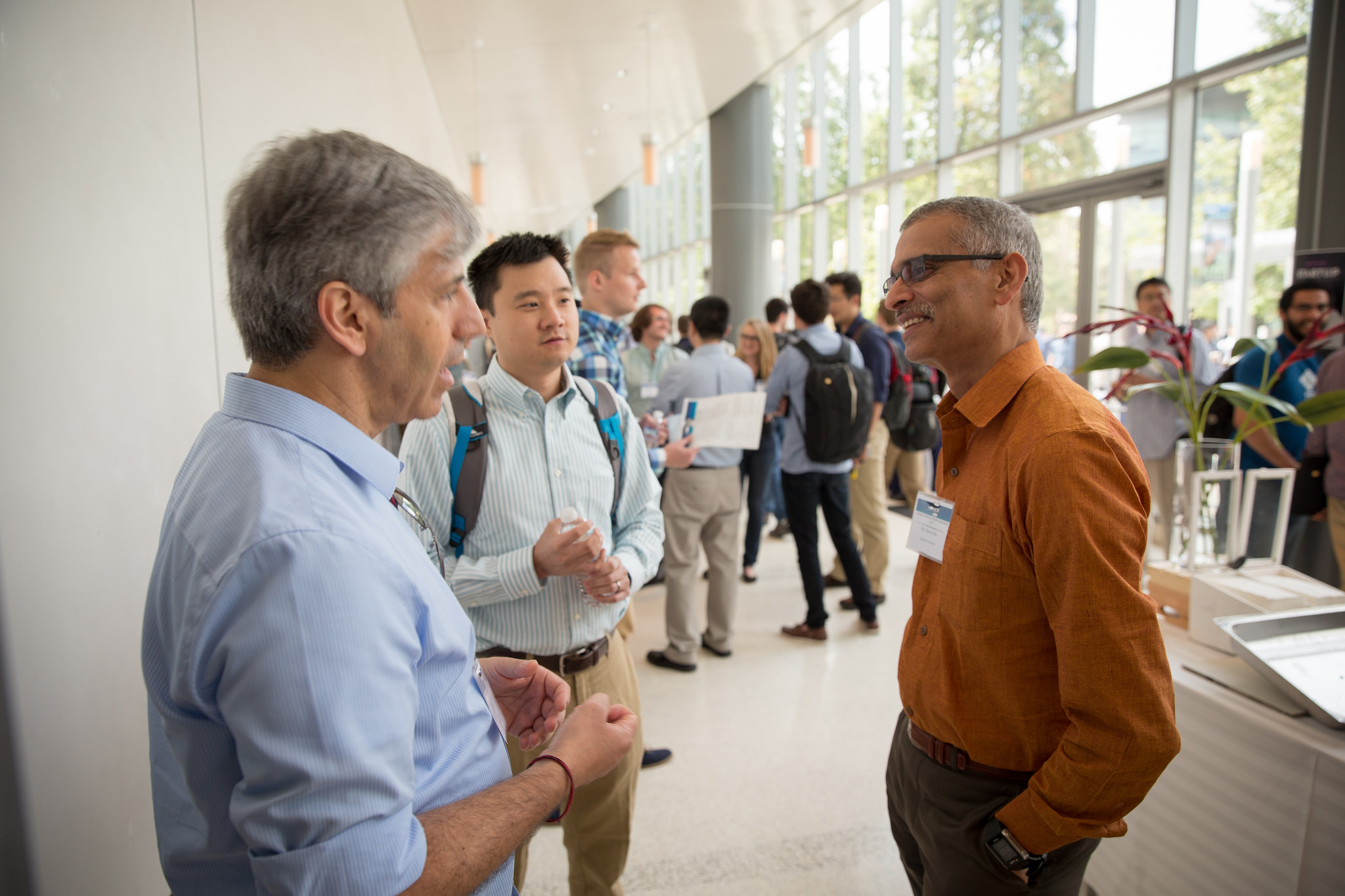Rallying Around Robots at the Inaugural Southern California Robotics Symposium
San Diego, Calif., May 4, 2016 -- When one thinks about “grassroots” organization, typically it’s political and environmental causes that come to mind, but this year’s Southern California Robotics Symposium (SCR) – held at the University of California San Diego – was whirring, whirling proof that even robots can be a cause to rally around.

The inaugural one-day technical symposium was organized by community members and brought together an overflow audience of nearly 250 roboticists from industry, academia and private research institutes to present and discuss cutting-edge research. Building connections and providing a recruitment opportunity for local companies and startups were additional objectives of the meeting, but no robotics event is complete without a whole lot of ‘bots to gawk at. There were plenty to be found at Southern California Robotics Symposium, from the Roomba 980 vacuum by iRobot roaming the lobby of the UC San Diego Qualcomm Institute (QI) to networked robots that find one another via sound localization, designed by UC San Diego Department of Music Ph.D. candidate Colin Zyskowski – an arts-based project that could, said Zykowski, also be used in disaster scenarios where sending in human rescuers is too dangerous.
“I find it interesting that robotics, in this instance, can have applications that are both practical and artistic,” said Zykowski. “That draws me not only to music, but robotics and interactive mechanics.”

Speakers at the Southern California Robotics Symposium included representatives from UC San Diego – Mechanical and Aerospace Engineering professor Sonia Martinez; Albert P. Pisano, Dean of the Jacobs School of Engineering Dean; and QI Director Ramesh Rao – as well as Charles Bergen (Vice President of Engineering for Qualcomm), Martin Buehler (Executive R&D Imagineer for Walt Disney Imagineering) and Larry Matthies (Group Supervisor/Senior Research Scientist for NASA / Jet Propulsion Laboratory [JPL]), among other speakers. Talks focused on everything from robot locomotion, navigation, control and planning to making robots more “human-like” by programming them with computer vision and equipping them with artificial hands enhanced by haptic perception.
Event organizer and Qualcomm Staff Research Engineer Ali-akbar Agha-mohammadi noted that “everybody, including the organizers, learned much more about the strength of the robotics research community in Southern California at SCR.

“We had a high density of prestigious academic institutions, research centers, and industry players including JPL, a powerhouse of robotics in the area with about 5,000 people involved in robotic space exploration. Also there were roboticists from Qualcomm, with its commitment to innovation in all areas including robotics, as well as iRobot, SpaceX and Disney.”
Agha-mohammadi called the symposium “a huge success.”
“We got a lot of positive feedback from the post-event surveys, ranging from the quality of talks (from world-renowned speakers) to student poster presentations and live robotic demos and exhibitions,” said Agha-mohammadi. He noted that attendees gave feedback highlighting how the symposium served as a good recruitment opportunity for local companies and startups and as a starting point for future collaborations.
Noting that the Southern California Robotics Symposium started as a casual workshop and then morphed into a symposium that was sold-out for months, Prof. Martinez then discussed her work to study and develop algorithms for human-robot swarm interaction and cooperative localization, where a human provides high-level inputs to a robotic swarm and the swarm reconfigures in a decentralized way to try to understand the commands of the human.

Mechanical and Aerospace Engineering professor Michael Tolley’s students presented a poster on their new design for a soft, pneumatic robotic hand capable of unscrewing the plastic lid off a bottle and putting dowels into wooden blocks, among other actions. Diego-San, an Android infant designed by researchers at the QI Machine Perception Lab, was also on display, as were the robotic imaging platforms for cultural heritage engineering developed by researchers at the QI Center for Interdisciplinary Science for Art, Architecture and Archaeology (CISA3).
Also representing UC San Diego at the Southern California Robotics Symposium were students from the Kastner Research Group, led by Computer Science and Engineering Prof. Ryan Kastner, and students from the QI Engineering for Exploration, who showcased a radio-collar tracker, underwater Spherecam and other robotic tools they use for supporting field biologists, archaeologists and explorers.
In his remarks, UC San Diego Jacobs School of Engineering Dean Albert P. Pisano celebrated the “exchange of ideas” at the symposium and noted the development of the UC San Diego Contextual Robotics Institute a partnership with QI that has grown to include 42 faculty since its creation last year and a total research expenditure of $10 million per year.
“And we’re hiring new faculty,” Pisano said about the robotics institute at UC San Diego. “As you can tell we are doubling down on this field and pushing forward as hard as we can.”
Agha-mohammadi says that following the positive feedback from the research community, he and his collaborators have already started planning for a similar event next year, with the goal of rotating the symposium among various institutions in the area and making it a “prestigious annual tradition in the robotics community of the Southern California.”
Related Links
Media Contacts
Tiffany Fox
(858) 246-0353
tfox@ucsd.edu
